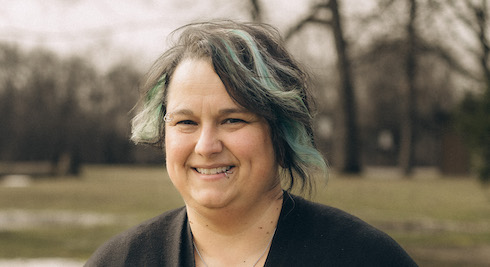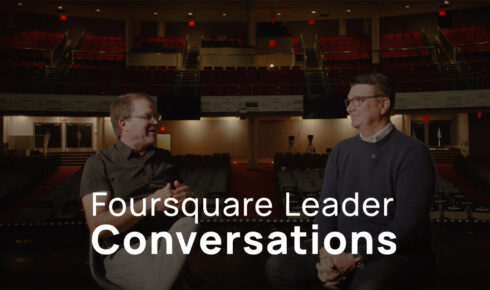
When newcomers to America from faraway places land at Denver International Airport, members of Light of the Nations (Denver South Foursquare Church) are there to shuttle them to their apartments. This is just one of many practical ministries offered by the southeast Denver congregation, which counts nine nationalities among the 130 people it typically sees at Sunday services.
“There’s a real bond that comes from that,” says Senior Pastor Andy Millar, who planted the Foursquare church two years ago. “They’ve been on a flight for 25 hours, and we are there, welcoming them with a smile. We are the face of America to them.”
Just north of the Mile High City, Hope Boulder (Boulder Flatirons Foursquare Church), pastored by Ted Vail, is planning a second Sunday service aimed at Hispanic and blended families, where grandparents speak Spanish and their grandchildren don’t. The outreach follows the June launch of the Hispanic Pastors Institute, overseen by Daniel Prieto, area Hispanic ministry superintendent for the Gateway District and the National Hispanic Council chairman.
Meanwhile, in central Georgia, Iglesia Cristiana Remanso De Paz (Warner Robins Hispanic Foursquare Church) has been on a steady growth pattern since joining the denomination in 1998. While still of modest size (100 average attendance), the church maintains an active outreach to its community. Among its efforts are providing interpreters for people in hospitals, helping feed the homeless, and collecting clothing and furniture for the needy.
“We work with anyone, regardless of race or background,” says Pastor Luis Ramirez, also an engineer at Robins Air Force Base.
These churches show how Foursquare congregations across the nation are stepping up their outreach to strangers in our midst, whether immigrants or other transplants, such as foreign exchange students.
Hispanic congregations now number one-sixth of the denomination’s approximately 1,800 U.S. churches. Other groups with an increasing presence include Brazilians, Indonesians, Koreans, Chinese and Nigerians.
National forecasts project continued growth of this ethnic melting pot. The Pew Research Center foresees today’s population of about 310 million reaching 438 million by 2050. Eighty-two percent of these additional citizens will be immigrants or those raised in an immigrant household.
Facing the Challenges
While leaders who minister to this divergent group say it offers many blessings, it also poses challenges. Among them are cultural clashes, potential misunderstandings and emotions charged by political controversies.
Still, Ted Vail believes Foursquare members are up to the task. The reason, says the pastor and associate director for Foursquare Missions International—U.S. Missions, is that reaching out is embedded in our spiritual DNA. The shining example is the founding church, Angelus Temple, which during the Great Depression of the 1930s out-gave all of Los Angeles County to meet people’s needs.
“It comes as no surprise that many of our churches are getting involved in this,” Ted says of efforts to extend a welcoming posture. “It’s part of our heritage.”
This outreach includes a new Foursquare campus ministry initiative to provide Thanksgiving hospitality to thousands of international students. Currently, 85 percent of them never see the inside of an American home during their time here.
However, not all Americans will extend open arms—particularly those who stereotype newcomers as illegal immigrants, unwelcome competition for scarce jobs, or radical Muslims threatening our nation’s security. Illegal immigration is one hot-button issue that Ted says shouldn’t deter churches from reaching out. Luis Ramirez agrees.
“We don’t ask for their status,” Luis says of immigrants his congregations assists. “We are here to present the gospel and hopefully convince them to accept Christ as their Savior, serve Him through our church, and follow the law.”
Nor is checking green cards necessary. Ted points out that congregations are not legally bound to investigate anyone’s residency before offering assistance. He advises moving beyond this issue and other stereotypes that can become spiritual blinders.
“When people get upset over headlines on cable news shows and Muslims coming here, they can’t see what God is doing,” says Ted. “We believe God has brought them here so they can hear the gospel.
“We get refugees from hard-to-reach countries like Iraq, Myanmar and Bhutan,” he continues. “We’re trying to get people to see that at least as many Mexicans receive Christ here as do in Mexico. And, the best answer for Muslims coming to the U.S. is to see them come to Christ, not kick them out.”
Exposing the Myths
Opposition to immigrants, in fact, departs from the biblical standard. During their lives, Abraham, Jacob and Ruth all left their homelands. And, after her move, Ruth became part of Christ’s lineage.
Ted points out that Joseph is an example of human trafficking, winding up in Egypt against his will. And the most relevant example for today’s church is how persecution scattered first-century followers of Christ throughout Judea and Samaria.
Despite God’s instruction in Exodus 23:9 to not oppress aliens, authors Matthew Soerens and Jenny Hwang say such opposition exists, often because people get caught up in politically charged rhetoric. Ironically, many of the “facts” cited about immigrants are false, say the authors of Welcoming the Stranger (IVP Books, 2009). Two myths their book documents:
- The Los Angeles Times supposedly reporting that 95 percent of murder warrants and 75 percent of people on the “Most Wanted List” in that city are illegal aliens. Neither is true; the Times never carried such a story.
- A report in 2005 that—because of illegal immigration—7,000 cases of leprosy had been reported the three previous years. In truth, there were only 137 cases in 2004, and no significant change for several years prior.
As Foursquare churches work to overcome inaccuracies and sterotypes and do their best to present a friendly face, Ted acknowledges they will face stiff tests of their ability to minister. Some people arriving in the U.S. for the first time have never lived in a house, held a job or dealt with the nation’s social service system. Until they get acclimated, almost every immigrant lives below the poverty line, he says.
“We can start to minister to them by creating awareness of their presence, even within our own neighborhoods,” Ted affirms. “We need the right heart to approach them. When people are in transition, that’s when they’re most open to the gospel.”
You are reading Part 1 of a four-part series.
Read Part 2: “Cultural Differences”
Read Part 3: “Spiritual Blessings”
Read Part 4: “Practical Ministry”


